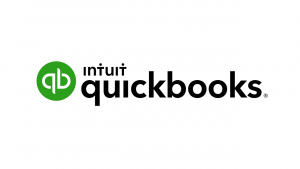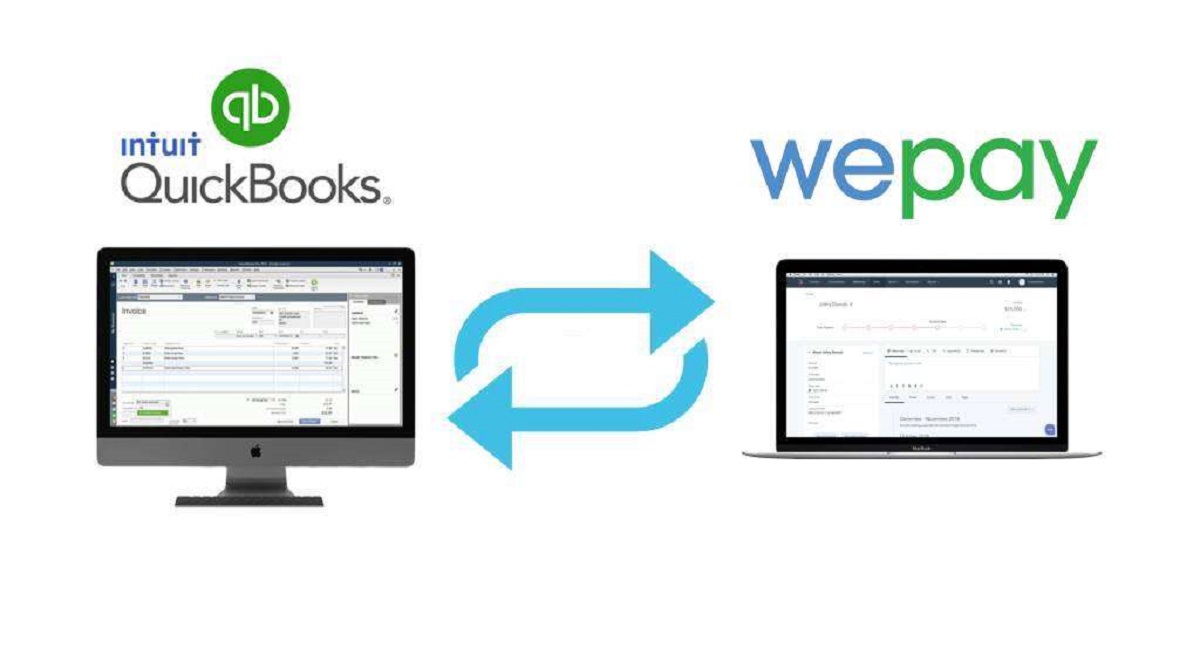Introduction
Welcome to our guide on QuickBooks Payments and its associated charges. QuickBooks Payments is a payment processing solution that seamlessly integrates with the popular accounting software, QuickBooks. It allows businesses to accept various types of payments, including credit cards, debit cards, and bank transfers, directly within the QuickBooks platform.
Understanding the fees and charges associated with using QuickBooks Payments is crucial for businesses to effectively manage their finances and ensure that accepting payments doesn’t eat into their profits. In this article, we will dive into the various fees and pricing structures imposed by QuickBooks Payments, and provide you with tips on how to minimize costs.
Whether you’re a small business owner just starting out or an established enterprise looking for a reliable payment processing solution, this guide will help you make informed decisions about whether QuickBooks Payments aligns with your budget and needs.
As you explore this article, you will gain insights into the transaction fees, monthly fees, integration fees, and any additional charges that may be associated with using QuickBooks Payments. We will also compare the pricing tiers of QuickBooks Payments to other payment processors, giving you a comprehensive view of the competitive landscape.
Keep in mind that the specific fees and charges can vary, so it’s always a good idea to consult the official QuickBooks Payments website or contact their customer support for the most up-to-date information. With that said, let’s dive into the details of QuickBooks Payments and its fees.
QuickBooks Payments Overview
QuickBooks Payments is a payment processing service that enables businesses to accept various types of payments, including credit cards, debit cards, and bank transfers, directly within the QuickBooks platform. By integrating payment processing with accounting software, QuickBooks Payments offers a seamless and efficient solution for businesses of all sizes.
One of the main advantages of using QuickBooks Payments is the convenience it offers. Businesses can accept payments from customers through multiple channels, including online invoices, mobile devices, in-person transactions, and even e-commerce platforms. This flexibility enables businesses to cater to their customers’ preferred payment methods, resulting in a more positive and streamlined customer experience.
Another key benefit of QuickBooks Payments is the automatic syncing with the QuickBooks accounting software. This integration eliminates the need for manual data entry, as transaction details are automatically recorded in the appropriate accounts, simplifying the bookkeeping process and reducing the risk of errors.
QuickBooks Payments also boasts robust security features to protect sensitive payment information. With end-to-end encryption and compliance with Payment Card Industry Data Security Standard (PCI DSS) protocols, businesses can rest assured that customer payment data is kept safe and secure.
Furthermore, QuickBooks Payments provides businesses with the ability to set up recurring payments for customers who require ongoing services or subscriptions. This feature saves time and effort by automating regular payment collections, ensuring a smooth and hassle-free payment experience for both the business and its customers.
Additionally, QuickBooks Payments offers advanced reporting and analytics tools that allow businesses to gain valuable insights into their payment transactions. By monitoring payment trends, analyzing sales data, and tracking customer behavior, businesses can make data-driven decisions to drive growth and improve their financial strategies.
Overall, QuickBooks Payments provides businesses with a comprehensive payment processing solution that combines convenience, security, and integration with accounting software. By utilizing this service, businesses can simplify their payment processes, enhance customer satisfaction, and streamline their financial management.
Transaction Fees
When using QuickBooks Payments, businesses can expect to incur transaction fees for each payment processed. These fees are typically calculated as a percentage of the transaction amount, although there may be additional fixed fees, depending on the specific circumstances.
For most businesses using QuickBooks Payments, the standard transaction fee is 2.4% of the transaction amount for swiped, dipped, or tapped payments. This rate applies when accepting credit card payments in-person using a card reader or a mobile device.
For manually entered transactions, such as when processing payments received via phone or online, the transaction fee is slightly higher at 3.4% of the transaction amount. This reflects the additional risk associated with manually entered payments, as there is a greater possibility of fraud or errors in such cases.
It’s important to note that these transaction fees can vary based on factors such as the type of card used (credit, debit, rewards, etc.), the location of the transaction, and the method of payment (swipe, chip, contactless, etc.). It’s recommended to refer to the QuickBooks Payments website or consult their customer support for the most accurate and up-to-date transaction fee information.
In addition to the percentage-based fees, QuickBooks Payments may also charge fixed transaction fees. For example, businesses may incur a fee of $0.25 per transaction for each payment processed using an e-invoicing service.
It’s worth mentioning that QuickBooks Payments offers different pricing structures and transaction fees for businesses in certain industries, such as nonprofits and healthcare. These specialized rates are designed to cater to the unique needs and requirements of these industries.
Overall, businesses using QuickBooks Payments should anticipate transaction fees based on the type of payment, whether it’s processed in-person or manually, the type of card used, and any additional fixed fees associated with specific services.
Monthly Fees
In addition to transaction fees, QuickBooks Payments may also impose monthly fees for certain features and services. These fees are typically charged on a recurring basis and are in addition to any transaction fees incurred.
The specific monthly fees can vary based on the pricing plan and the features that a business chooses to utilize. QuickBooks Payments offers different pricing tiers to accommodate businesses of various sizes and needs, with each tier having its own set of monthly fees and included features.
For example, the “Pay As You Go” plan, which is ideal for small businesses or those with infrequent payment processing needs, has no monthly fee. However, businesses utilizing this plan are subject to higher transaction fees.
On the other hand, the “Monthly” plan, which is suitable for businesses with higher transaction volumes, incurs a monthly fee in exchange for lower transaction fees. The specific monthly fee for this plan varies depending on the volume of transactions processed.
It’s important for businesses to carefully assess their payment processing needs and determine which pricing plan aligns best with their requirements. Consider factors such as transaction volume, average transaction size, and the anticipated frequency of payments to make an informed decision on the most cost-effective plan.
In addition to the monthly fees associated with the pricing plans, businesses may also incur add-on fees for optional services. For instance, businesses that require advanced reporting and analytics capabilities may opt for additional reporting features, which could come with an additional monthly fee.
Furthermore, businesses that need to accept online or e-commerce payments may need to subscribe to additional services or integrations, such as QuickBooks Online or QuickBooks Commerce. These services may have their own monthly fees that are separate from the fees associated with QuickBooks Payments.
It’s important for businesses to carefully review the pricing structure, including any monthly fees, before deciding on the most suitable plan and features for their needs. Analyze the expected transaction volume and frequency, as well as the additional services required, to make an informed decision and minimize monthly fees.
Integration Fees
When integrating QuickBooks Payments with other software or platforms, businesses may be subject to integration fees. These fees are usually one-time charges associated with setting up the integration and ensuring seamless communication between different systems.
QuickBooks Payments offers a wide range of integrations with various e-commerce platforms, shopping carts, mobile apps, and other software solutions. These integrations allow businesses to expand their payment processing capabilities and improve efficiency by synchronizing data across different systems.
The specific integration fees can vary depending on the type of integration and the software or platform being integrated with QuickBooks Payments. Some integrations may offer free or basic integration options, while others may require a fee to enable more advanced or customized integration features.
For example, businesses that choose to integrate QuickBooks Payments with popular e-commerce platforms like Shopify or WooCommerce may be required to pay a one-time integration fee. This fee covers the setup process, including configuring the integration, syncing inventory and product information, and ensuring smooth payment processing.
It’s important for businesses to assess their integration needs and weigh the potential benefits against the associated integration fees. Consider factors such as the level of automation, the ability to streamline operations, and the potential impact on revenue and customer experience.
Additionally, businesses should also ensure that the integration fees are transparent and reasonable. Compare the costs and features of different integrations and evaluate whether the benefits of the integration outweigh the associated fees on a short-term and long-term basis.
It’s worth noting that some integrations may require ongoing maintenance and support, which could result in additional recurring fees. Carefully review the terms and conditions of the integration, including any potential ongoing costs, to ensure that the integration remains cost-effective in the long run.
Additional Fees
In addition to transaction fees, monthly fees, and integration fees, there may be additional charges associated with using QuickBooks Payments. These additional fees are often specific to certain services or circumstances, and it’s important for businesses to be aware of them to avoid any surprises on their billing statements.
One common additional fee is the charge for chargebacks or disputes. If a customer disputes a charge and requests a refund, QuickBooks Payments may impose a chargeback fee. This fee covers the administrative costs associated with handling the dispute and resolving the issue. It’s essential for businesses to carefully review and follow proper procedures to minimize the occurrence of chargebacks and their associated fees.
Another additional fee that businesses may encounter is the fee for recurring billing. QuickBooks Payments allows businesses to set up recurring payments for customers with ongoing services or subscriptions. However, there may be a fee for utilizing this feature. This fee is typically charged on a per-transaction basis for each successful recurring payment processed.
Businesses that require additional card reader devices or mobile payment accessories may also incur equipment fees. QuickBooks Payments offers a variety of card readers and accessories to meet different business needs. The specific fees for these devices can vary, and businesses should consider the cost of equipment when budgeting for payment processing expenses.
It’s also important for businesses to understand the potential fees associated with account cancellations or early termination. If a business decides to discontinue using QuickBooks Payments or terminate their account before the agreed-upon contract period, there may be cancellation or early termination fees. It’s crucial to carefully review the terms and conditions of the agreement to understand the potential financial implications of account closure.
Furthermore, businesses that require additional support or personalized assistance from QuickBooks Payments may have access to premium support services for an additional fee. This allows businesses to receive dedicated assistance and faster response times for their inquiries and troubleshooting needs.
As with any fee or charge, it’s important for businesses to thoroughly review the terms and conditions provided by QuickBooks Payments. Understanding the full scope of potential additional fees will help businesses plan for their payment processing expenses and minimize any unexpected costs.
QuickBooks Payments Pricing Tiers
QuickBooks Payments offers different pricing tiers to accommodate businesses of various sizes and transaction volumes. These pricing tiers are designed to provide flexibility and cater to the specific needs and budgets of different businesses.
The pricing tiers offered by QuickBooks Payments include the “Pay As You Go” plan and the “Monthly” plan.
The “Pay As You Go” plan is suitable for businesses with infrequent payment processing needs. This plan has no monthly fee but charges higher transaction fees compared to the “Monthly” plan. It is an ideal choice for businesses that process payments on an irregular basis and do not require advanced features or lower transaction fees.
The “Monthly” plan is geared towards businesses with higher transaction volumes. This pricing tier charges a monthly fee in exchange for lower transaction fees. The specific monthly fee varies depending on the volume of transactions processed. Businesses with consistent payment processing needs and a higher transaction volume may find this plan more cost-effective.
It’s essential for businesses to carefully evaluate their payment processing requirements and compare the pricing tiers to determine which plan aligns best with their needs and budget. Consider factors such as the average transaction volume, frequency of payments, and the anticipated impact on overall costs.
In addition to the base pricing tiers, QuickBooks Payments also offers specialized pricing for certain industries, such as nonprofits and healthcare. These specialized rates are designed to cater to the unique needs and requirements of these industries, ensuring that businesses in these sectors can benefit from tailored pricing structures.
It’s important to note that pricing tiers and fees can change over time, so businesses should regularly review the QuickBooks Payments website or consult with their customer support to obtain the most accurate and up-to-date pricing information. This will help businesses make informed decisions and optimize their payment processing costs.
By understanding the different pricing tiers and evaluating which plan best fits their needs, businesses can effectively manage their payment processing expenses and ensure that they are getting the most value out of QuickBooks Payments.
Comparing QuickBooks Payments to Other Payment Processors
When choosing a payment processor, it’s important for businesses to compare different options to find the one that best meets their needs in terms of features, pricing, and overall value. While QuickBooks Payments offers seamless integration with the QuickBooks accounting software, it’s still beneficial to consider how it compares to other payment processors in the market.
One well-known alternative to QuickBooks Payments is PayPal. PayPal offers a range of payment processing services, including online payments, in-person transactions, and mobile payments. It provides a user-friendly interface, international payment capabilities, and a diverse set of integrations. While QuickBooks Payments offers integration with QuickBooks for streamlined accounting processes, PayPal may be a better fit for businesses that prioritize ease of use and flexibility across different platforms.
Another popular payment processor is Stripe. Known for its developer-friendly tools and robust APIs, Stripe offers a seamless payment integration experience and supports diverse payment methods including credit cards, digital wallets, and direct bank transfers. Stripe’s pricing is based on a pay-as-you-go model, making it appealing to businesses that have varying transaction volumes and want flexibility in managing costs.
Square is another payment processor that provides a holistic solution for accepting payments. Square’s key selling points are its easy-to-use point-of-sale system, its inventory and sales management tools, and its competitive pricing. Square may be a preferred choice for businesses in the retail or hospitality industry that need a comprehensive solution for in-person payments and management of sales data.
It’s important for businesses to carefully assess their specific needs and compare the features and pricing of different payment processors. Consider factors such as transaction fees, monthly fees, integration capabilities, customer support, and additional services offered. This analysis will help businesses determine which payment processor aligns best with their requirements.
Additionally, it’s beneficial to read reviews and gather feedback from other businesses or industry professionals who have experience with various payment processors. These insights can provide valuable information about the usability, reliability, and customer satisfaction of each payment processor.
By comparing QuickBooks Payments to other payment processors in the market, businesses can make an informed decision and select the payment processing solution that best fits their needs in terms of functionality, cost-effectiveness, and overall ease of use.
Tips for Reducing QuickBooks Payments Costs
As businesses strive to maximize their profits, it’s important to find ways to minimize costs associated with payment processing. Here are some tips to help reduce QuickBooks Payments costs:
1. Monitor transaction fees: Keep a close eye on your transaction fees and identify any potential patterns or anomalies. Analyze your transaction volume, average transaction size, and customer payment preferences to optimize your fee structure.
2. Encourage lower cost payment methods: Educate your customers about the payment methods that incur lower transaction fees. Encourage them to use ACH transfers or debit cards instead of credit cards to help reduce the fees associated with each transaction.
3. Optimize pricing plan: Regularly review your pricing plan and assess whether it aligns with your current transaction volume and needs. If your transaction volume has significantly changed, consider switching to a different pricing tier that offers more favorable fees.
4. Negotiate fees: If you have a high transaction volume or anticipate substantial growth, consider reaching out to QuickBooks Payments directly to discuss the potential for negotiating lower fees. They may be open to providing customized pricing based on your business’s unique circumstances.
5. Streamline payment processes: Implementing efficient payment processes can help save time and reduce costs. Utilize automated features such as recurring payments or invoicing to minimize manual efforts and associated expenses.
6. Use integrated solutions: Explore the integration options that QuickBooks Payments offers with other software or platforms. By using integrated solutions, you can streamline your operations and potentially reduce the need for manual data entry, saving time and minimizing the risk of errors.
7. Review and dispute chargebacks: Promptly address any customer disputes or chargebacks to minimize associated fees. Properly document transactions, maintain clear communication with customers, and provide excellent customer service to reduce the likelihood of chargebacks.
8. Monitor industry trends: Stay informed about changes in the payment processing industry, including new technologies, regulations, and industry standards. By staying ahead of the curve, you can adapt your payment processing strategies to minimize costs and take advantage of emerging opportunities.
9. Regularly review your payment processing expenses: Keep track of your payment processing costs on a regular basis. This allows you to identify any unexpected charges, anomalies, or opportunities for improvement. Reviewing your expenses regularly helps you stay proactive in managing your costs.
By implementing these tips, businesses can effectively reduce their QuickBooks Payments costs and optimize their payment processing operations. Remember to regularly assess your payment processes, monitor fees, and explore opportunities for cost savings to ensure that your payment processing expenses remain under control.
Final Thoughts
Choosing the right payment processor is a crucial decision for businesses of all sizes. QuickBooks Payments offers a seamless integration with the QuickBooks accounting software and provides businesses with a convenient and secure solution for accepting payments.
Understanding the various fees and costs associated with QuickBooks Payments is essential for businesses to effectively manage their finances. By being aware of transaction fees, monthly fees, integration fees, and any additional charges, businesses can make informed decisions and optimize their payment processing expenses.
While QuickBooks Payments provides a comprehensive payment processing solution, it’s important to compare it to other alternative processors in the market to ensure that it aligns with your specific needs and budget. Consider factors such as transaction fees, pricing tiers, integrations, and additional features to find the payment processor that best fits your business requirements.
To reduce costs associated with QuickBooks Payments, businesses can implement several strategies. By monitoring transaction fees, encouraging lower-cost payment methods, optimizing pricing plans, and streamlining payment processes, businesses can effectively minimize expenses. It’s also beneficial to negotiate fees, review and manage chargebacks, and stay updated with industry trends to take advantage of cost-saving opportunities.
Regularly reviewing payment processing expenses and staying proactive in managing costs is important for businesses to maintain a healthy financial position. By implementing the tips provided in this guide, businesses can optimize their use of QuickBooks Payments and ensure that their payment processing costs remain under control.
Remember, every business is unique, and it’s important to carefully assess your specific needs and evaluate the features, fees, and value that QuickBooks Payments offers. By doing so, you can make informed decisions and leverage QuickBooks Payments to streamline your payment processes and drive the success of your business.

























